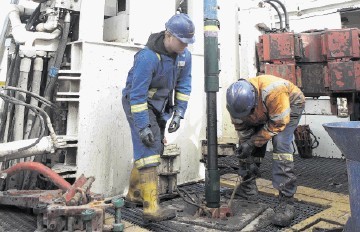
Offshore – dead and buried, thanks to onshore shale? Not quite.
Energy analysts Westwood Global say the US onshore fracking market is in “overdrive” with contractors scrambling to meet demand.
But Westwood says the amount of onshore activity hasn’t affected the market offshore which is showing “encouraging trends”, particularly with E&P companies now able to take advantage of low prices.
A total of 17 floating production and storage units were ordered last year – compared to zero in 2016 – with a further 19 units expected to be ordered this year.
Westwood is currently tracking 29 FPS developments under construction, and have identified nearly 100 further deployment prospects for the coming years.
They say E&P firms are reporting some deepwater projects have more favourable economics than work in shale.
Steve Robertson, Westwood’s head of oilfield services, said: “Offshore, the market is also recovering. However, pricing pressure is absent.
“The industry simply built up too much capacity for the expected level of activity, leading to an oversupply of rigs, construction vessels, and support vessels.
“This is good news for E&P companies that can now take advantage of rock-bottom pricing when sanctioning new developments.
“E&P companies are starting to report that some deepwater projects have more favourable project economics than shale, with Hess in recent weeks citing the example of Liza Phase 1 in Guyana requiring circa $35/bbl in order to break even, with a comparable onshore project in the Delaware Basin requiring $45/bbl.
“Guyana has proven a huge success for Exxon and its partners, with further encouraging discoveries (the sixth, Ranger, was announced this month) with proven reserves standing at 3.2bn bbls, excluding Ranger.
“A second FPSO for Liza, with a production capacity of up to 200 kbbl/d, is expected to be ordered in 2019.
“The summary is cautious optimism for the offshore sector as we enter 2018, and an opportune moment for E&P companies to be sanctioning projects.”
Recommended for you
